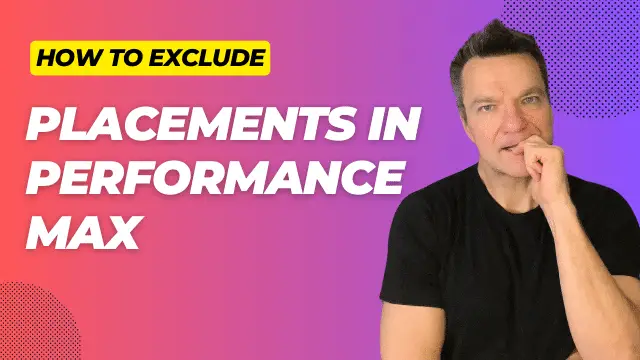Effective bidding strategies form the foundation of successful Google Ads campaigns in today’s dynamic digital landscape.
As an e-commerce marketer, you’re well aware that bidding decisions can make or break your advertising efforts.
Let’s get into the reasons and methods behind my bidding techniques in shopping and Performance Max campaigns, updated for 2024.
Video tutorial.
If you prefer video content, take a look at this guide from my Youtube channel
Three Stages of a Shopping Campaign
In every campaign I manage, I use a variety of bidding strategies, each specifically designed for the campaign’s current phase.
I view each campaign to undergo through three esssential stages during its lifecycle: Data Gathering, Efficiency, and Scale.
Each of these stages aims to meet a specific goal, and I use a particular bidding strategy to achieve these goals.
Let’s take a closer look at each stage.
Stage 1: Data Gathering
The initial phase, Data gathering, focuses on building a clean conversion history.
Accurate conversion data input is crucial for enabling Google’s algorithms to drive scalable and profitable growth.
The target during this phase is at least 30 conversions per month over two to three months.
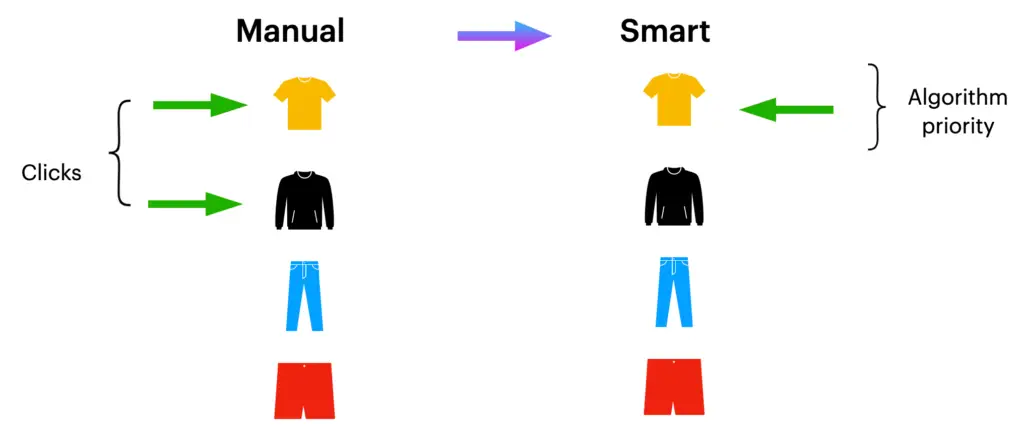
Should I progress to the next phase after just 30 days, the algorithm would focus on products that met the target, which would be fewer products, while neglecting the others.
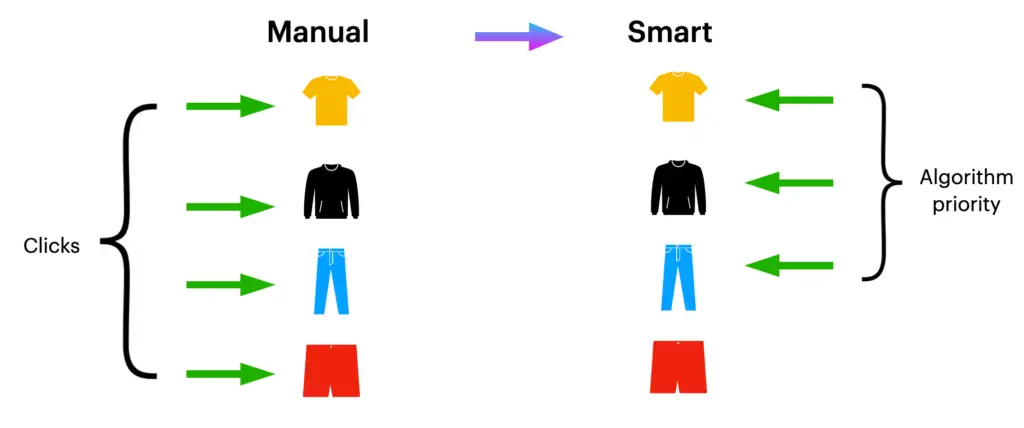
By prolonging this phase to 60 or even 90 days, I create opportunities for a wider range of products to gain clicks and potentially meet the required target ROAS, thus setting the stage for greater scalability later on.

On standard shopping campaigns. I use Manual CPC bidding without the Enhanced CPC option.
Enhanced CPC is a form of smart bidding, and I want to exclude any automated bid adjustments at this stage.
Clean manual bidding gives superior control and flexibility in setting product bids. Bids could applied from the ad group level to individual SKUs.
I also monitor the exact search terms and apply negative keywords, minimizing the initial wasted spend.
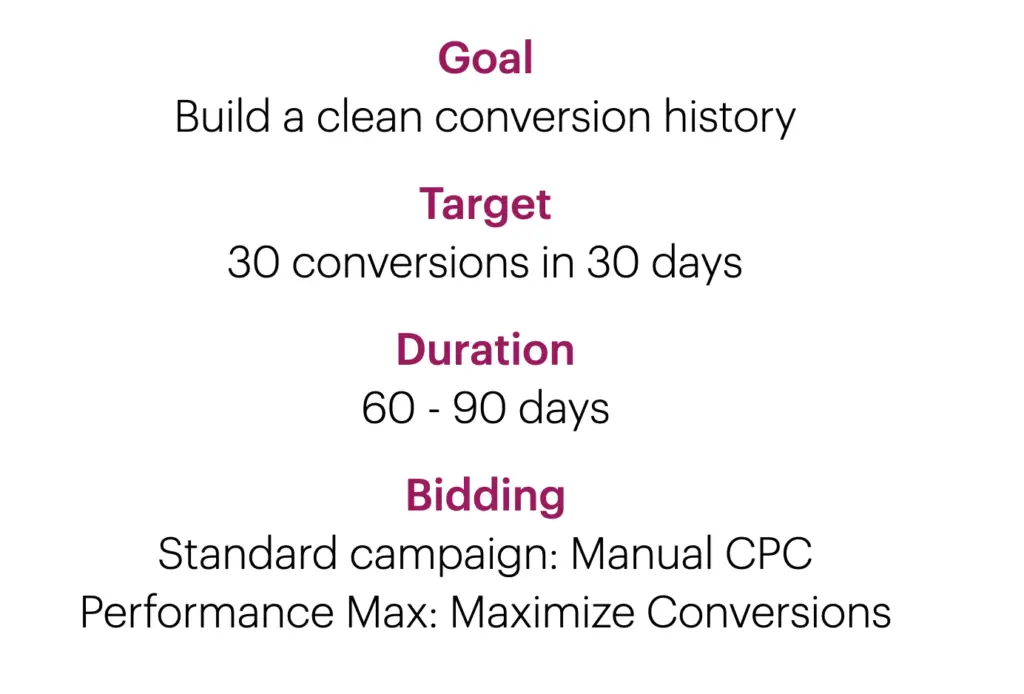
On the Performance Max campaigns, I opt for Maximize Conversions bidding strategy. This strategy is the least demanding form of Smart Bidding tailored to meet the goals of this initial phase.
Stage 2: Efficiency
The next phase is Efficiency, where I want to identify the acceptable Return On Ad Spend (ROAS) level.

In the context of standard shopping campaigns, this is where I start to implement Smart Bidding, specifically utilizing target ROAS (tROAS), setting it around 15% lower than the ROAS achieved in the previous two weeks.
The reason for not opting for a higher, more aggressive ROAS target at this stage is to continue allowing a broader range of products to receive clicks.
The campaign typically arrives at the higher ROAS then the target.
For Performance Max campaigns, I use a similar approach but achieve it with the target Cost Per Acquisition (CPA) into the Max Conversions strategy. Here, I set a target CPA that is about 15% to 20% higher than the average cost per conversion observed over the last two weeks.
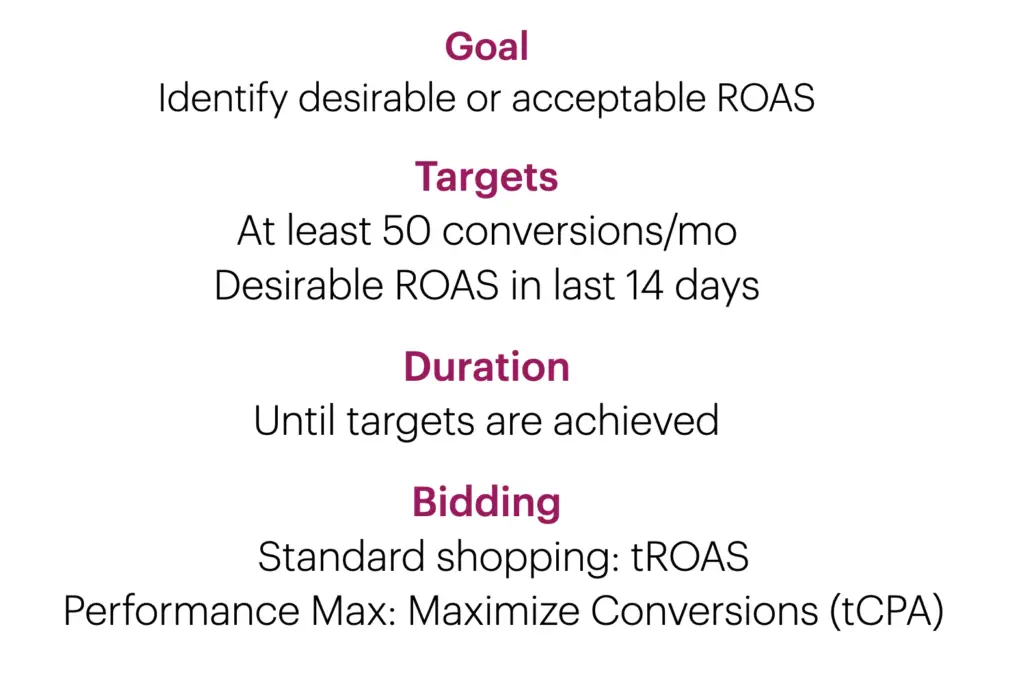
This approach is maintained until the campaigns consistently deliver 50 conversions per month and achieve a satisfactory ROAS over the final two weeks.
Stage 3: Scale
If scale is my business goal, I move the campaign to the Scale stage. The primary goal during this stage is to grow revenue while maintaining an acceptable Return On Ad Spend (ROAS).
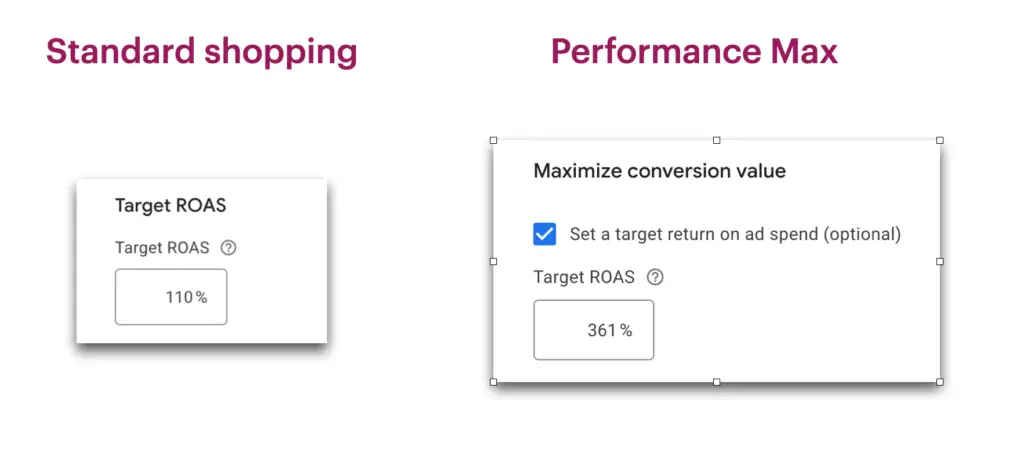
This video won’t cover the specifics of revenue growth for shopping campaigns. That’s a separate subject that encompasses tactics such as structuring accounts and campaigns, modifying budgets, and adjusting bidding targets for optimal performance.
However, it’s important to note that Target ROAS is the main bidding strategy for driving expansion during this phase, relevant to both standard shopping and Performance Max campaigns.
I stick with the tROAS strategy on a standard campaign and switch my Performance Max campaigns to Maximize Conversion value with Target ROAS).
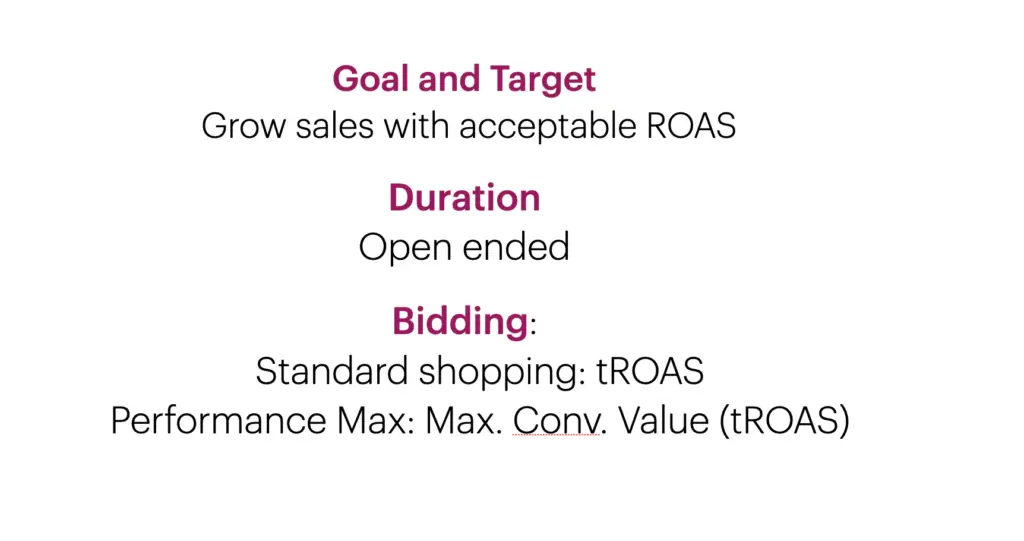
The duration of the Scale phase is open-ended, as maximizing revenue while sustaining ROAS is often the ultimate objective for shopping ads in most scenarios.
Conclusion
We’ve reviewed my bidding approach for Performance Max and standard shopping campaigns, breaking down the big three phases: Data Gathering, Efficiency, and Scale.
While bidding is one key area in optimizing a shopping campaign, remember to pay attention to the other two areas: feed optimization and account structure. But those are topics for another day.
I’d love to hear from you. Please comment below on what Google Ads topics you would like me to cover in the future.


